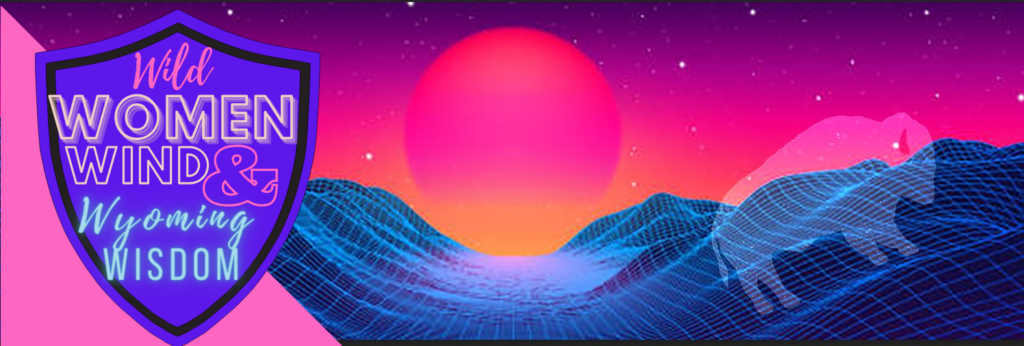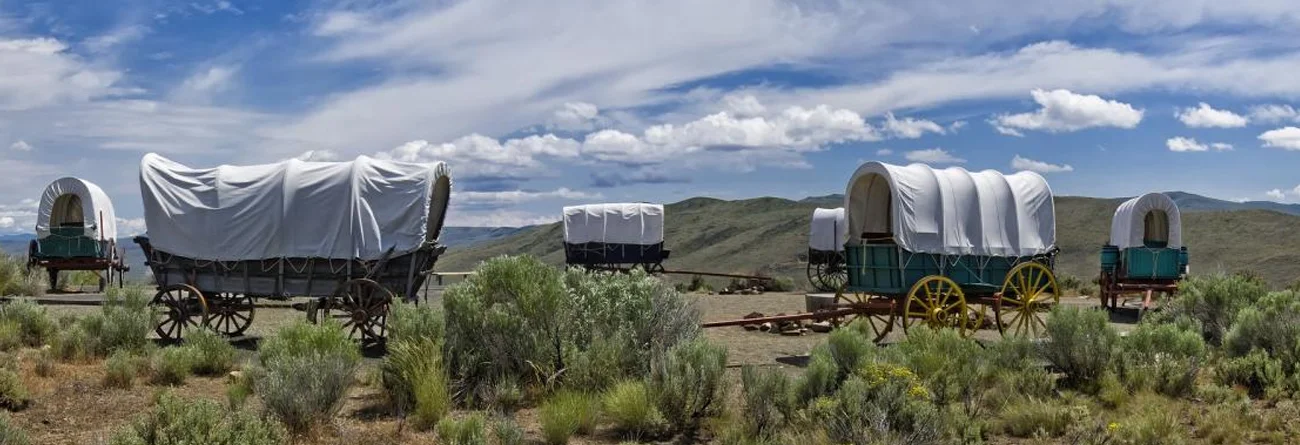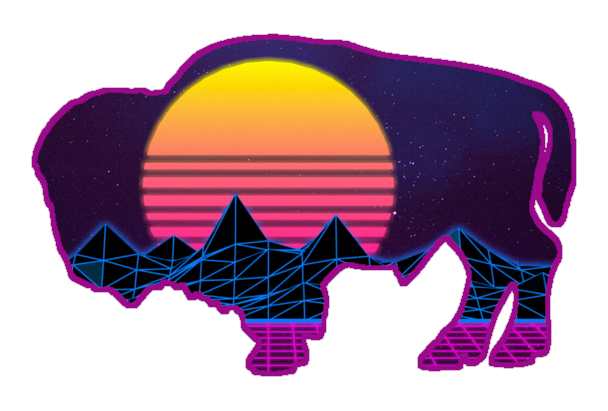I’m sure this was a pretty universal experience in elementary school, especially for a kid that grew up in Wyoming– It was a special, exciting day when the teacher allowed us to play Oregon Trail on one of the class or library computers. It was always an unwritten rule that you made the names of your party members friends nearby— that way you could tell them when they died of dysentery on the way to Oregon.
The Oregon Trail video game was originally released in 1974, so by the time my classmates and I were playing it, it had already been a staple in social studies classes for decades. See, in Wyoming there’s a special curriculum for the fourth grade– we learned about wyoming history and historic places. This was usually capped off by what we called the “4th Grade Field Trip”– Several days of seeing the sights in the rural areas of our state and the buildings that made the state government move.
We visited the Capitol, saw the museums at the F.E. Warren Air Force Base (where my friends said they captured ghosts on their disposable cameras) and even a few of the places mentioned in the eponymous Oregon Trail video game. Remember Independence Rock? We read the names written into the side of it with all of the rapt attention a fourth grader could muster– then we saw the real Oregon Trail wagon ruts and register cliffs, for more names carved into the stone by passerby immigrants to the west.
If you’re not along the route to Oregon, it’s hard to explain how much of a huge impact the trail had on many communities and landmarks on the way. Many of our ancestors wouldn’t even be in the Wyoming territory if not for their decision to stop along the trail and stay. My own family came a more round-about way to the territory though South Dakota, but the register cliffs in Guernsey were only a short walk away.
The Oregon Trail video game was the brainchild of a teacher who had been searching for a way to make the dull history lessons more exciting for his students. In 1971, Don Rawitsch was a senior at Charleton College in Minnesota when he taught an 8th grade history class– it inspired him to begin coding a new video game– one that would make learning a little more fun. Coding on very early computers, he eventually needed to recruit two more teachers to help made his 8 bit fantasy a reality.
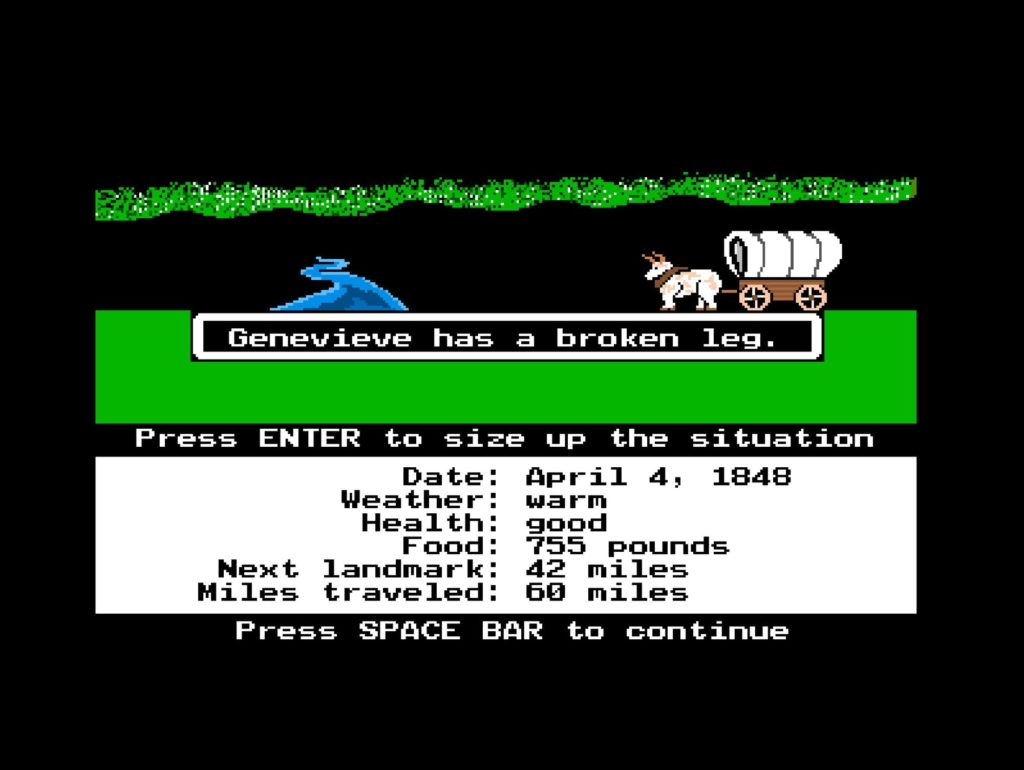
The very first kids to experience the video game were Rawitsch’s very own students- After he left their class, he would take the game with him to an educational entity in Minnesota, where he was hired to complete his game for school kids all over the world.
The original game shared many of the modern elements to the game that anyone would recognize; choosing your start time, buying initial supplies, trekking between well-known landmarks just like the pioneers did on the way west. Forts and trading posts lined the trail to keep immigrants safe on the long journey.
First– you need to decide when you’re leaving– if you leave too early or too soon, you might find yourself in snow before you can make it to the coast. If you don’t take enough supplies, you’d better hope a fort on the way has enough to sell or trade. Maybe you could rely on hunting along the way, but what if you went days without seeing any game? Your family members could get sick on the road west and instead of a family burial plot back home, they’d be buried along the trail with a wooden marker.
These were all challenges you’d run into both in the video game and the real trail– taking the trail yourself in an 8-bit simulacrum would make the message sink in that much deeper– no kid likes to lose at a video game.
But hey, if you couldn’t ford the Dalles river when you reached Oregon, you were sunk and lost the game. Luckily though, kids playing the game in classes could reboot the game and try again. The real settlers– not so much.
The Oregon Trail began in Independence, Missouri and continued into Nebraska until Chimney Rock and Fort Kearney. Today those landmarks sit on the I-80 corridor and are just as much a draw as they once were with tourists and sightseers traveling the route every year.
Travelers came into what is now present-day Wyoming where they’d have the option of going to Laramie, one of the few towns already established, or they could go to FORT laramie. And yes, I know they have the same name but they’re actually about 200 miles apart— Both are named for a trapper that was lost somewhere up north near Wheatland. Jacques La Ramee has the distinction of his name being used all over the west after his untimely death was announced as a murder from indigenous tribes– which was a fallacy, by the way. The accepted story now is that he fell into the ice on the river that now bears his name.
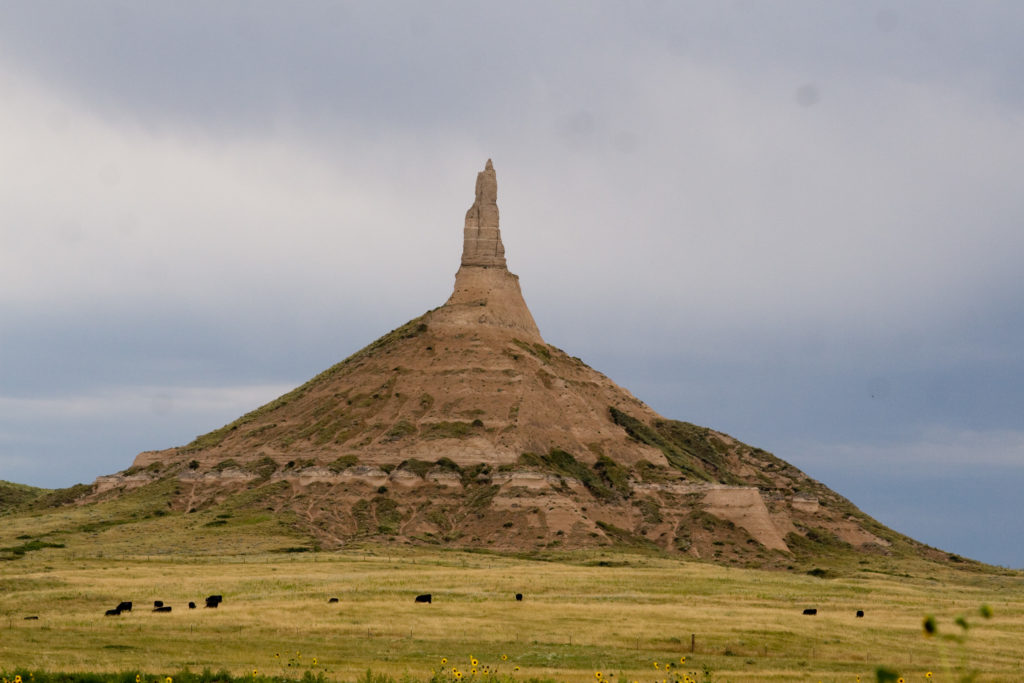
The Oregon Trail was laid out by trappers in the 1820s and 1830s, giving La Ramee’s story even more of legendary slant, since the only thing to do on the trail was tell stories around the campfire, and hope there’s enough Whiskey to make it to the next Fort.
Next, the wagon trains would head from one of the Laramies to try to be at Independence Rock by July 4th. It both meant they would be on time and on track to reach Oregon before the snow set in too hard, and also that they would be able to let off some steam by partying with many other travelers– a feast and celebration were always planned when they’d circle the wagons at Independence Rock–
The rock itself still stands to this day. They described it as looking like a sleeping animal, a mount jutting into the prairie and drawing attention.
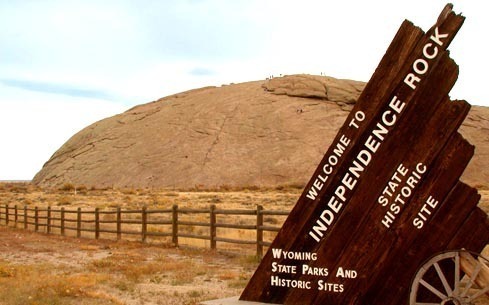
After that, the next stop was South Pass, the best way to get through the rocky mountain without needing to scale any real mountains. This was the point they had to cross before the snow.
By now I’m sure you’re wondering about one of the most famous of the parties to travel this way– The infamous Donner Party. First thing’s first, they were actually on the California Trail, which followed a similar route until Fort Bridger– Where the roads would diverge. Their fatal mistake was two-fold— listening to a trapper at the fort who told them they knew an easier way to get through the mountains, and leaving too late. Snow stacked up to 25 ft drifts stood in their way as they tried to cross the last mountain range before making it to California. The lake nearby where their wagon train was snowed in now bears the name of Donner lake, with a monument to their fateful tragedy of a wagon train.
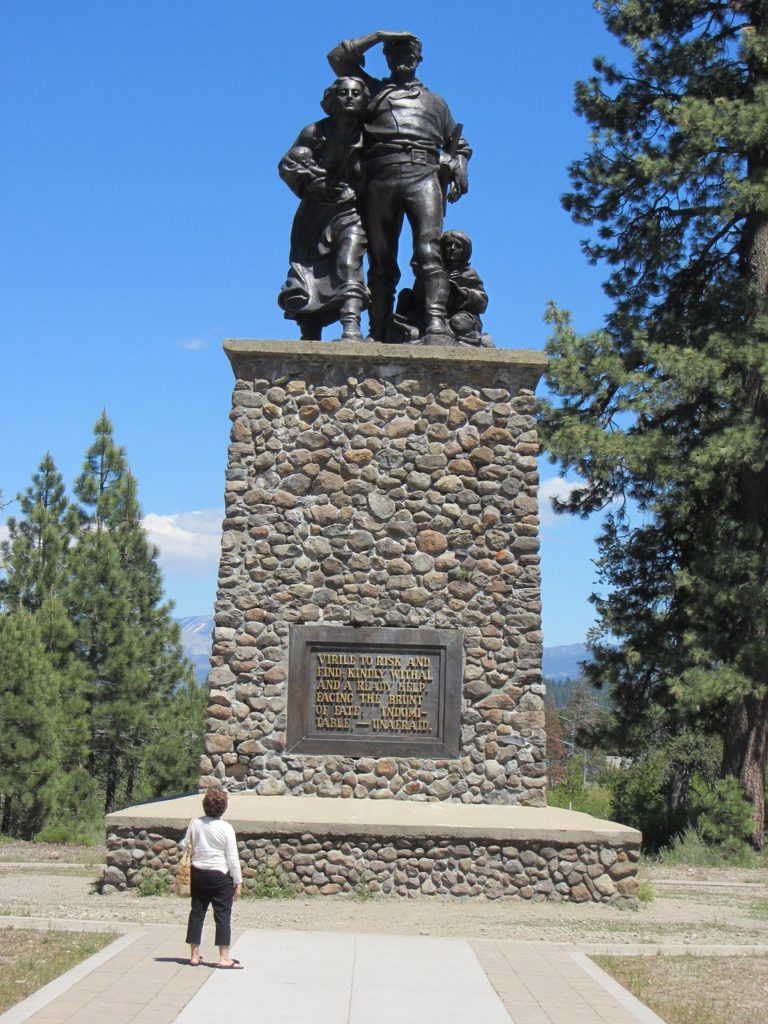
And yes, there were reports of cannibalism during the trip- necessary to survive while their family members dropped dead of starvation or — dysentery. They weren’t the only group not to survive the trek. While the estimation is hard to verify, many researchers think as many as 20,000 people died on their way across the west.
Let’s get off that bummer subject and talk about how many people survived the trip out west and went on to settle in the Oregon or California territories. Of course, many stopped along the way and decided that Laramie, Wyoming was far enough, especially when the Homestead Act made it possible to own land with very little improvement needed to keep it.
The full length of the Oregon Trail was 2,170 miles, with stops about every few hundred miles. Like the video game illustrated with the passage of time on the trail, it took several months to traverse, even with the fastest oxen. After the 1849 strike of Gold in california, a rush to get to the gold-holding hills was ignited, with as many as 400,000 emigrating in just a 20 year period.

The video game left kids like me with a healthy respect for the Oregon Trail, especially the parts that passed through my home state of Wyoming. Many tough people made the trek and even more kids sitting in a computer lab followed along and put themselves in the shoes of the immigrants. Make sure you have enough Oxen and pounds of food on the trail. Maybe even take some medicine, ammunition, and a dutch oven.
The Oregon Trail is traveled to this day in the form of 8-bit animations and history lessons.

